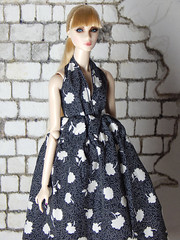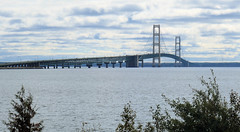
- More Detail Here:
- Gowan Lea Timbers Website
By Jonathan Williams
Poland is a county that is located in Central Europe. This is a country rich in history as well as beautiful places, and as such, this has become a favorite tourist destination. Here are the places that you should visit while in Poland.
1.) Old Town
Words can only capture so much of the beauty and timelessness that defines Stare Miastro. Take a walk or ride a bike or carriage for a tour of the city, and be mesmerized by the simple grandeur of the place. Pubs, bars, restaurants, etc. are plenty in the city, so you don’t have to worry when that tummy churns from hunger in this beautiful city.
2.) Warsaw
World War II did something to change the landscape of Warsaw, but the beauty of this city remains worthy of a stopover. Visit Warsaw and see for yourself the Royal Castle, the Wilanow Castle, the Lazienki Park, and other scenic sites that gives color and grandeur to this Polish city. The ruins of the Jewish ghetto wall are standing up to this day, a reminder for the many who perished in Nazi atrocities and the few who managed to come back.
3.) Sopot
Sopot is the premiere vacation spot in Poland that gives travelers a scenic place and a place for a myriad of activities. Sopot is also a home to both budding and respected artist in various fields, giving radiance to the already lively place. With so many things to do, boredom is certainly one of things you shouldn’t plan for in this city.
4.) Slowinski National Park
Drop by the Baltic Coast and see for yourself the various land features that characterize Slowinski National Park’s topography. Walk by the beach, enter the forest, step on wet marshlands and sand dunes, and cross grassland and moors while you’re in it. Be fascinated by the wide variety of flora and fauna that comes with it.
5.) Tatra Mountain
Tatra Mountain range, home of natural wonders and mountain adventures, lies in the border of Poland and Slovakia. Glance at the Polish biodiversity while admiring the landscape formed by four glaciations that took place in the Tatra mountain regions. Take a hike and climb the peaks of Tatra, and be astounded by the scenic view of Poland from its side.
6.) Auschwitz
More than sixty years after the Nazi Rule, Auschwitz stands as a reminder of the past that should be forever remembered. Travel back in time of Nazi’s occupation of Auschwitz and relive the tragedies that surround the concentration camps. Let the edifice and the few things left both by the perpetrators and the victims speak of the history that unfolded in this side of the Polish lands.
7.) Great Masurian Lake
Found in the northern part of the country, Great Masurian Lake is the remains of the Ice Age that cover all of Poland. With some 4000 lakes linked by intricate river and water tributaries, it covers up to 15% of all Masurian Plateau. Travel the lake in its entirety with bike tours made available in the area.
8.) The Wawel
Visit the place where polish kings rule for over 500 years. Walk around time and see yourself time-locked in the Renaissance period with Wawels’s castle, churches, courtyards, and other infrastructure. Learn, discover and marvel at the sight of this city.
9.) Czartoryski Museum
Da Vinci and Rembrandt aficionados who plan to visit Poland put Czartoryski Museum on top of their list. Despite losing some artworks during Nazi occupation, artworks like Da Vinci’s Lady with the Ermine and Rembrandt’s Landscape with the Good Samaritan is still a sight to see. Tour the museum for more artworks from Greeks, Romans, Etruscans, Italians, Dutch, and Flemish artists.
10.) Kazimierz Dolny
Named after Kazimierz Wielki who founded the town in 1335, this polish town offered shelter to persecuted Jews before World War II. The number of Jews living in Kazimierz was a target for the Nazi during WWII, reducing the 70,000 Jews in pre-world war era into 600 to this day. Take a peek into the preserved Jewish ghettoes and discover the lives these people have then.
About the Author: Jonathan Williams is the travel writer for Destination Guide TV – the place to share travel videos. Visit destinationguide.tv/poland to view or share Poland travel videos.
Source: isnare.com
Permanent Link: isnare.com/?aid=231055&ca=Travel

